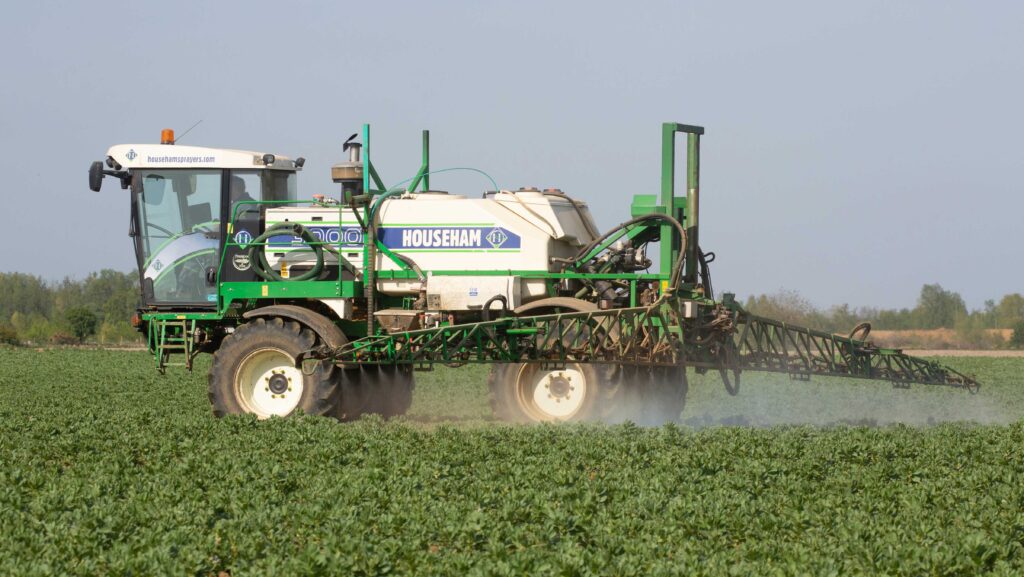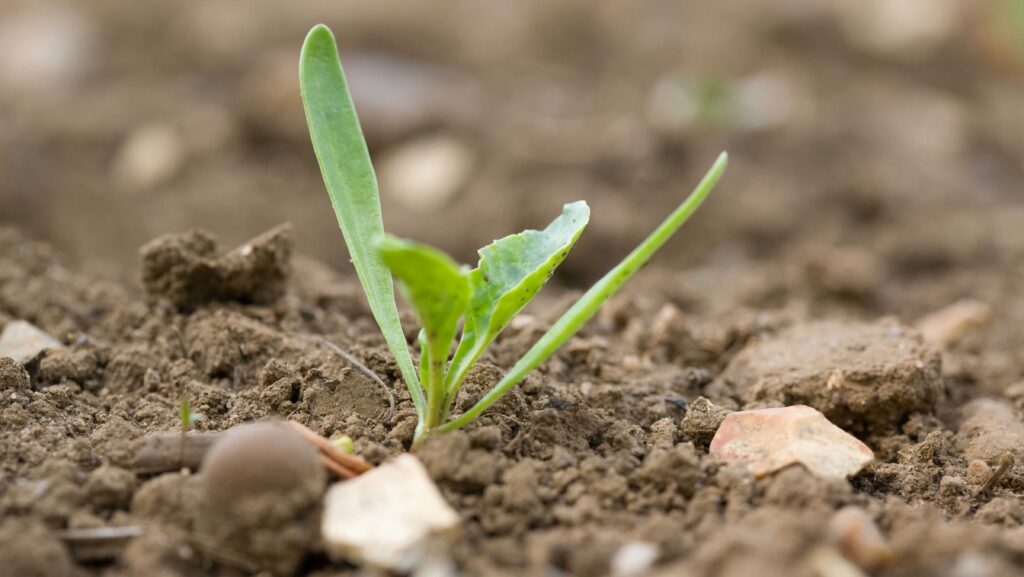Crop Watch: Brown rust alert in wheat and bean fungicides
 © Tim Scrivener
© Tim Scrivener In a season that continues to bring surprises, brown rust is being seen much earlier than usual in some wheats, with the most severe cases being in early drilled crops. Fungicide mixes are being tweaked to manage the disease.
However, septoria remains the main target in wheat, given the endless rain-splash incidents.
In beans, chocolate spot and downy mildew are easy to find, and an early fungicide will be needed as it is difficult to eradicate if left untreated.
See also: Greater yield and margin for winter barley grower
South
Jamie Swift – Procam (East Sussex)
Where T0 applications in wheat were missed or delayed by weather conditions unfavourable for spraying, yellow rust infections are present in a number of varieties, not just in the likely candidates such as Zyatt and Skyfall.
What is more surprising is the number of reports of brown rust, a disease more normally associated with later in the season. The most severe infections seem to be in early drilled crops.
SDHI fungicides offer the best results against rust, and where septoria continues to be present, folpet will be added to the mix.
Spring herbicides are being applied, with earliest-drilled crops facing the greatest weed burden, especially where top-up herbicides could not be applied in the autumn.
As soil temperatures slowly rise, crops are rapidly progressing through growth stages – which is a very welcome sight when field walking.
Unfortunately, these conditions are conducive to both grass and broad-leaved weeds.
Careful consideration needs to be taken when choosing herbicide actives, as many weeds germinating now can lead to crop competition if missed off the control list.
Bean disease
A very wet start to the season has delayed drilling of many spring bean crops.
Moving to the winter crop, timing, as always, is crucial with regard to fungicide applications. With a spread of drilling dates and crop growth stages, there will be a need for a field-by-field approach when timing fungicides this spring.
The usual suspects – chocolate spot and downy mildew – are easy to find, making an early fungicide necessary in most instances.
Chocolate spot must be taken care of early, as an untreated infection can quickly become hard to eradicate when left too late.
Where infection is high, I’ll be turning to prothioconazole, but where possible a nutritional product to promote the crop to grow away from the disease.
West
Stephen Harrison – AICC/Southwest Agronomy (Avon)
“April is the cruellest month” (TS Eliot, The Waste Land). This may seem a strange comment for a month when new growth is regenerating.
The writer is referring to the prospects for dismay if potential is not realised. This is so true of crop production.
All the graft through the long, wet winter and early spring, laying the foundations for a successful crop, will come to nought if the weather is unkind and we do not continue our best endeavours through to harvest.
For a season with so many fields laid bare, “waste land” seems an appropriate turn of phrase.
As I write, wheat futures are hitting £208/t for November. At least there is the prospect of a margin to repay all the effort. I am sure it was the right choice to leave borderline crops in the ground – they will come to something and the extra costs of establishing a new crop will be avoided.
We have ripped up areas with severe blackgrass infestations, principally on wet land where it was not possible to apply pre-emergence herbicides.
Wheat fungicides
A few dry days allowed us to apply the bulk of final leaf three treatments to winter wheat.
Rarely have I used so many different combinations, from simple azole/multisite mixes for the most backward crops right through to pricey new SDHI offers on thicker, more forward crops.
Septoria remains the dominant disease. Early applications of tebuconazole to yellow and brown rust-prone varieties have curtailed the epidemic for now.
Caution has been required with growth regulators, as grassweed herbicides have stressed some crops.
Winter barley is doing its usual sprint down the final furlong. Catchy weather means that it has not always been possible to stick with our intended three-spray fungicide programme.
Winter beans are now commencing flowering and are due their first fungicide.
Spring cereal and pulse drilling is almost complete, way behind schedule. Maize drilling is under way, although with soil temperatures just creeping up to 10C, we are in no rush.
By the time this appears in print. April will have passed into May. I hope May is the kindest month.
North
Mary Munro – AICC/Strutt and Parker (Perthshire)
It stopped raining. The relief is almost palpable. Since mid-April the countryside has been transformed, and while there are still fields to sow and potatoes to be planted, an astonishing amount of work has been done.
Spring cereals and beans have gone into drying seed-beds and are emerging quickly.
Rather ridiculously, the ground is already worryingly dry in some places, and spring cereals could struggle to emerge through the surface crust of dry soil.
So far, fortunately, emergence has been even enough, and there has clearly been enough moisture to get the early crops off to a good start.
This is by no means the latest start to spring sowing that I have seen, and the varieties of beans we have nowadays are much earlier maturing than 20 years ago, when there could be a layer of snow on top of them before harvest.
Oilseed rape
Oilseed rape is flowering, but there is a lot of variation between and within crops, and this unevenness will hinder decision-making for those looking to apply two doses of fungicide.
I am aiming for one treatment at mid-flowering – this will be Aviator (bixafen + prothioconazole) or an alternative prothioconazole-based mix.
Winter barley has not jumped in quite the spectacular way we are used to.
T1 treatments and the first plant growth regulator went on just in time – a little late for perfect disease control, but the incipient rhynchosporium has been curtailed and it is a great relief to get the growth regulator on.
A second hit later will be included with T2. I am inclined towards Revystar (fluxapyroxad + mefentrifluconazole) for T2, to make use of the ramularia efficacy. I have more faith in it than in folpet.
Wheats are into stem extension now and most are at the T1 timing.
A large proportion of winter wheat missed the T0 spray, so T1 will be a robust treatment to knock back the septoria, which has exploited the endless rain-splash incidents and is at higher levels than usual.
We are spoilt for choice of product with wheat fungicides, but I am looking at Univoq (fenpicoxamid + prothioconazole) for T2 and one of the others at T1 – Revystar, Elatus (benzovindiflupyr + prothioconazole) and Ascra (bixafen + fluopyram + prothioconazole) have all worked well in this slot.
All the chlormequat will be on with T1, and there has been a swift blast on weeds to tidy up and avoid having massive amounts of chemistry going on at one pass.
East
Becky Finbow – Agrovista (Norfolk/Suffolk)
It’s nearly May as I write this and it still feels like winter in the East. The thick coat and wellies are definitely becoming a fixture.
Winter wheats have grown; with the third leaf out they are awaiting T1 sprays. My recommendations are heavily reliant on variety this year – with plenty of yellow rust, brown rust and septoria about, I have opted for Bayer’s new SDHI technology Iblon on dirtier varieties.
Fortunately, a lot of my growers have varieties in the ground with a particular strength against yellow rust or septoria.
Yellow rust is apparent in a lot of varieties this year, one of which is Insitor. Because of this, I will include Solatenol alongside azoles and a multisite at T1.
On varieties with more natural resistance to yellow rust, I am predominantly focusing on Revysol.
Now that spring crops have finally made it into the ground, they are desperate for some warmth, something we all have in common. I had maize drilled in soil temperatures of 6C last week on light soils. Emergence predictions are currently at two weeks.
Maize
Intermittent showers will assist in activating pre-emergence applications on these maize crops, with pendimethalin being my chemical of choice.
It’s a similar story for sugar beet crops. Seeds that have been in the ground for a week have only just shot, but luckily weeds are starting to pick up the pre-emergence thanks to the added moisture in the ground.

© Tim Scrivener
For later-drilled spring barleys, I might recommend an aphicide and nutrition at the two-leaf stage.
There are lots of emails circulating about aphids numbers this year, so it’s important to keep an eye on cereals and beet alike.
Earlier-sown spring barley crops are receiving a T1 alongside the relevant herbicides.
Many crops didn’t get a pre-emergence spray due to the weather and crop damage worries, so weeds are plentiful, particularly those annoying polygonums where hormone-type chemistry will come in handy.

